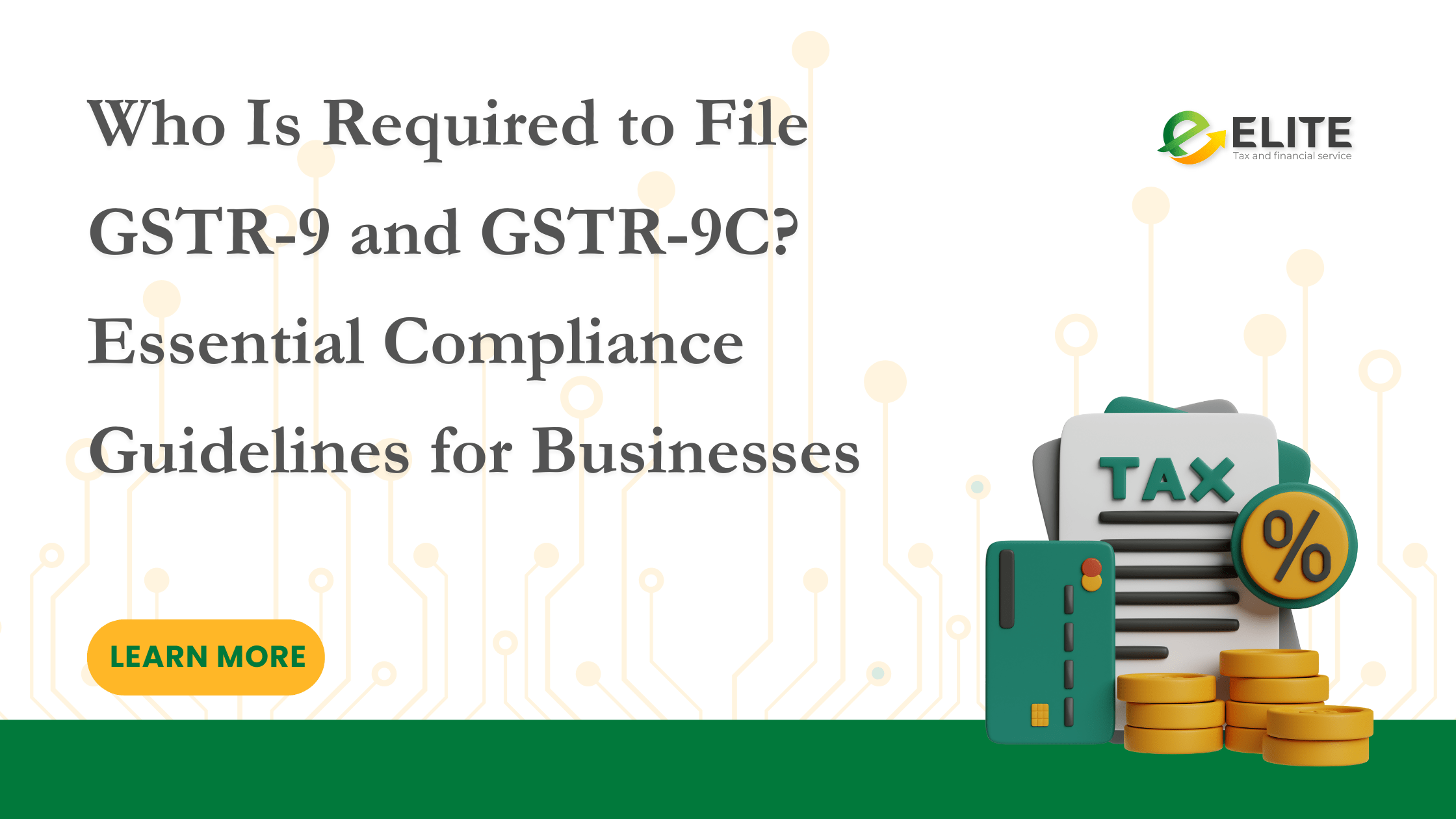Looking for an expert to handle your finance?
Get a FREE Consultation about your personal & business finance from our experts today

Filing GST returns accurately is crucial for compliance with tax regulations. Among the various GST returns, GSTR-9 and GSTR-9C play a significant role in annual reporting and reconciliation. This blog will delve into the GSTR-9 and GSTR-9C filing requirements, explore the GSTR-9 compliance essentials, detail the GSTR-9C documentation needed, and provide insights into the GSTR-9 and GSTR-9C due dates. By understanding these aspects, you can ensure timely and accurate submissions, avoiding potential issues with tax authorities.
GSTR-9 is an annual return that provides a summary of all GST transactions for a financial year. It consolidates information from monthly or quarterly GSTR-1 and GSTR-3B filings. This return is essential for:
Filing GSTR-9 involves several key requirements:
GSTR-9C is a reconciliation statement that must be filed by taxpayers with an annual turnover exceeding ₹2 crore. It serves as a bridge between the audited financial statements and the GST returns filed. The purpose of GSTR-9C is to:
GSTR-9C requires detailed documentation and adherence to specific requirements:
GSTR-9 compliance involves several crucial steps to ensure accurate and timely filing:
When preparing GSTR-9C, it’s important to have the following documentation:
Adhering to GSTR-9 and GSTR-9C due dates is essential to avoid late fees and penalties. Here’s an overview of the due dates:
Get a FREE Consultation about your personal & business finance from our experts today
Keep detailed and accurate records of all transactions throughout the financial year. This will simplify the preparation of GSTR-9 and ensure accurate reconciliation in GSTR-9C.
Regularly reconcile your GST returns with financial statements to identify and address discrepancies early. This proactive approach will facilitate smoother annual filing.
Consult with a Chartered Accountant (CA) or GST expert to assist with GSTR-9C preparation and audit. Professional guidance can ensure compliance and accuracy.
Stay informed about changes in GST laws and filing requirements. Regularly review updates from tax authorities and attend relevant workshops or webinars.
Adhere to the due dates for GSTR-9 and GSTR-9C to avoid late fees and penalties. Set reminders and prepare your returns well before the deadlines.
Understanding GSTR-9 and GSTR-9C filing requirements is crucial for accurate and compliant GST reporting. By adhering to the GSTR-9 compliance essentials, preparing the necessary GSTR-9C documentation, and meeting the GSTR-9 and GSTR-9C due dates, you can ensure a smooth filing process and avoid potential penalties. Implementing best practices and seeking professional assistance will further enhance accuracy and efficiency in your GST reporting. Stay proactive and informed to manage your GST obligations effectively and maintain compliance with tax regulations.
a Chartered Accountant (CA) is not required to submit a monthly Goods and Services Tax (GST) return in India.
All gst registered businesses have to file monthly or quarterly GST returns and an annual GST return based on the type of business. These GSTR filings are done online on the GST portal.
Due date for filing GSTR-1 for monthly filers is 11th of the next month and for quarterly filers is 13th of next month of quarter. Due date is not different for different states like it is in GSTR-3B.
What is the minimum GST turnover limit? Companies with a yearly turnover of more than Rs. 40 Lakhs (for goods) and Rs. 20 lakhs (for services) are required to register for GST and pay taxes on their taxable goods and services.
The penalty for late filing of GST returns is typically a late fee of Rs. 50 per day for taxable returns and Rs. 20 per day for nil returns. Additionally, interest may be charged on the unpaid tax due at a rate generally around 18% per annum, calculated from the due date of the payment until the actual payment date.
© 2024 – Website Designed By Prashanth C